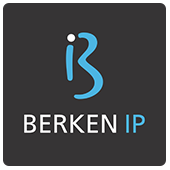
Claims and Description
Most patent laws establish that the right conferred by a patent is determined by its claims (see, for ex., Section 11 of the Argentine Patent Law, Articles 69 and 84 of the European Patent Convention (EPC), or paragraph 112(b) of Title 35 of the United States Code). Thus, the claims define the subject matter for which protection is sought (namely, the invention).
For this reason, the proper drafting of patent claims is of vital importance to an intellectual property strategy: the scope of the claim will be determined by the terminology used and will define which embodiments are covered.
For example, if a claim uses the term “vinyl polymer,” its scope will be broader than if it used the term “polystyrene” (a specific type of vinyl polymer). While this results in broader protection, it also increases the number of prior art documents that may affect patentability, as the scope of protection is inversely related to patentability.
Now, if the claims define the right and therefore constitute the “heart” of a patent, what is the role of the description? In short, the description must support the claims, and describe the invention defined by them in a sufficiently clear and complete manner.
On the other hand, patent laws establish that the description, which includes a written description and, optionally, drawings, is used to interpret the claims. In general, it is the patent offices or courts that decide how this interpretation is to be carried out. Moreover, these interpretations may differ from one another, as is the case in the United States (the “broadest reasonable interpretation” standard before the USPTO vs. the “ordinary and customary meaning as understood by a person of ordinary skill in the art in light of the description and prosecution history” standard applied by the courts).
It is also common for the same right holders to advocate for different interpretations of the same claims, depending on whether the goal is to assess the scope of the right in the context of infringement, or to analyze whether the invention meets the patentability requirements. In the former case, the right holder will tend to argue that the claim has a broad scope, allowing them to block a larger number of competitors, while in the latter, they will argue for a narrower interpretation to strengthen the patentability position.
In this context, a key question arises: what happens when the terms of a claim may be interpreted in a certain way “on their own,” but are defined or given a proposed interpretation within the description?
This question was recently addressed by the Enlarged Board of Appeal of the European Patent Office (EPO) in its decision G 1/24. This decision originated from case T 0439/22, in which the term “gathered sheet” had to be interpreted in the claims of patent EP 2 307 6804.
The usual interpretation would be “a sheet folded along lines to occupy a three-dimensional space.” However, the application indicated that the term should be interpreted as “corrugated, folded, or compressed or otherwise constrained substantially transversely to the cylindrical axis of the rod.” Using this latter interpretation, patentability—particularly novelty—was affected by prior art. For this reason, the applicant sought to distance itself from the interpretation proposed in the description, arguing that claim terms should be interpreted according to their usual meaning and that the description should be consulted only in case of doubt.
Three questions were posed to the Enlarged Board in case T 0439/22, including:
Can the description and drawings be consulted when interpreting the claims to assess patentability and, if so, can this be done as a general rule or only if the person skilled in the art finds the claim unclear or ambiguous when read in isolation?
In response, the Enlarged Board considered that there is no single legal basis for claim interpretation in the context of assessing patentability, as Article 69 of the EPC relates to the scope of protection for infringement purposes, while Article 84 sets formal requirements for the content of a patent application and does not refer to claim interpretation.
Nevertheless, based on the case law of the Technical Boards of Appeal, the Enlarged Board concluded:
“The claims are the starting point and the basis for assessing the patentability of an invention. The description and drawings shall always be consulted to interpret the claims when assessing the patentability of an invention, and not only if the person skilled in the art finds a claim to be unclear or ambiguous when read in isolation.”
This decision reaffirms the importance of the description in interpreting the claims in all circumstances. It also sets out guidelines for the alignment between the description and the claims —something that some EPO examiners were already strictly enforcing when requesting amendments to the description in line with the allowable claims following examination.
Decision G 1/24 may influence how courts, both in Europe and other jurisdictions, interpret the scope of protection of a granted patent, and reinforces the importance of precise drafting to protect the interests of right holders.
Emilio Berkenwald
Latest Posts
Simplification of the trademark system: an opportunity for business and investment in Argentina
In the professional practice of trademark law, we emphasize this in every consultation with entrepreneurs, SMEs, and large companies: trademark protection...
Towards a new balance between human creation and AI
Artificial intelligence has become a central part of our daily lives. It generates texts, images, melodies, and even contributes to the development of...
